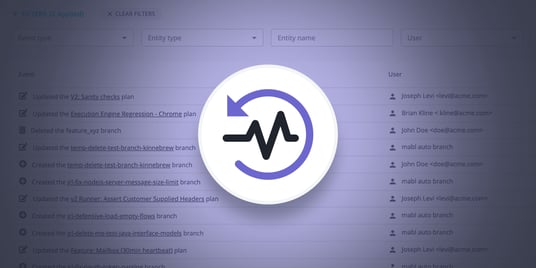When we think about test automation, we usually first think about the ability to create automated tests with testing frameworks like Selenium and Cypress. But those frameworks require specialized technical skills and come with their own unique set of challenges around test creation, reliability, and maintenance. Historically, test creation has been the biggest obstacle to having decent end-to-end test coverage that can catch issues before a release.
Adding to these challenges is the fact that until recently, testing has been done primarily in a silo by individual QAs or dedicated QA teams, and collaboration between testers and developers was limited. To enable a true culture of quality with test automation, we need solutions that prioritize collaboration.
Increase test coverage with more collaboration
We can no longer afford to perform testing in isolation, especially if we want to unlock the full benefits of DevOps to continuously deliver software updates to users. Thankfully, modern low-code test automation solutions like mabl make it quick and easy to create automated end-to-end tests without specialized technical skills, and run tests across browsers with unlimited parallelism at the click of a button. This brings everyone on the team, including manual testers and product owners, into the testing process to help increase test coverage.
But as more and more people are integrated into testing, the need for collaboration becomes more urgent. Solution features that encourage and support greater teamwork have become a top priority for high-velocity enterprises and startups alike. With an increased number of contributors within the same workspace, it’s inevitable that there will be unwanted changes, such as updates to credentials, that cause some tests to fail. Tracking changes, particularly damaging ones, can be a challenging and time-consuming activity without an easily accessible trail of user activity data. The new mabl activity feed offers that capability to maximize visibility across a growing team of active testers.
Get more visibility with the activity feed
As the number of people working with end-to-end tests increases, so does the need for user collaboration and full visibility into changes that happen within the platform. To help keep everyone on the same page, mabl provides an activity feed that lets you quickly review changes within your mabl workspace for a given time period.
Activity feed in mabl showing sample data with an option to filter based on various criteria.
The activity feed is your central hub for at-a-glance answers to questions like:
- Who deleted a missing test and when?
- Who made changes to the login credentials in the last two weeks?
- What tests did John update in the past week?
- Who made changes to JavaScript code snippets and reusable flows?
- When did a test name change?
Currently, mabl tracks create, update, and delete actions across eight entities in the workspace. Not only does the activity feed provide details on access changes, but also enables users to quickly identify and resolve broken tests, further reducing the maintenance burden of automated tests. For additional details on how to use this feature, check out the activity feed help docs.
The key to collaboration
One of mabl’s key attributes is that everyone on the team, including non-technical people, can easily create automated end-to-end tests to increase coverage across both UI and API layers of the tech stack. Testing needs to be a team sport that demands tools that facilitate collaboration between 10s and even 100s of users working together. This requires testing solutions that are easy to use, provide user activity at a glance, and can integrate seamlessly with CI/CD, issue tracking, and communication workflows.
Close collaboration during the test creation and analysis process is how high-velocity teams are avoiding testing bottlenecks and delivering higher quality software to market, faster. Try mabl today to see how intelligent test automation can promote wider collaboration, improve test coverage and scale to hundreds of users within your organization.
Happy testing!






